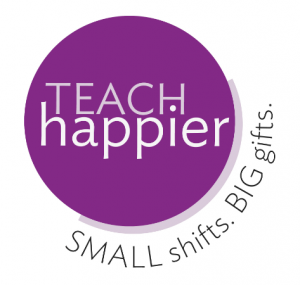TL;DR:
- December marks basketball season for our family, with our son playing for multiple teams.
- A lesson in leadership from basketball benches: It’s not just about on-court performance; it’s about Energy Generating Behaviors (EGBs).
- Examples from UConn and Mizzou show how small actions, like supporting teammates, listening actively, and cheering create impactful leadership, applicable beyond the court—relevant for classrooms and homes.
The beginning of December can mean many things: the official start of the holiday season and the official end of another calendar year. For my family? December means the official start of basketball. NBA and NCAA are in full tilt and our son will find himself playing for four teams when the weeks overlap in a certain way. It’s so much fun.
I recently learned something from basketball that I couldn’t wait to share with you. It’s not what’s happening on the court…it’s actually what’s happening on the bench. This lesson comes from 2 college teams: the UCONN women’s team and the University of Missouri’s men’s team.
Our goal is to get into the healthiest headspace and heartspace for our upcoming week, whatever our important role may be. Click To TweetLeadership Happens Everywhere
Both examples are inspired by an idea from Shawn Achor’s book, Big Potential: How Transforming the Pursuit of Success Raises Our Achievement, Happiness, and Well-Being (2018). This book reminds us that we all have the opportunity to lead from whatever seat we are in. In other words, whatever our important role is where we work or live provides an opportunity to lead to make our educational organization or family structure stronger.
Back to basketball. When considering leadership in various roles, you may think it’s about what each player does in their important position as point guard, shooting guard, or center. But that’s not our focus today. What these college athletes from both teams do on the court is amazing. But what happens off the court and on the bench could be even more interesting.
Here’s our first example.
Geno Auriemma is beginning his 39th year as the head coach of UConn women’s team. You don’t need to be a basketball fan to know that women’s basketball at UConn is one of the best programs in the country. After any win or loss, Coach Auriemma reviews film from the court AND the bench. While examining footage from the bench he analyzes: What energy is exuded? How are teammates supporting one another? How are the players on the bench contributing to the success on the court? As he reviews the film from the bench, it helps him decide who plays in the next game, and what their important role may be.
Our next example comes from Mizzou’s Ben Sternberg.
The only way he made the men’s basketball team was as “equipment manager.” Last season he played a total of nine minutes in seven games and scored six points.
And yet, Ben is one of the most impactful leaders on the team because he has EGB: Energy Generating Behaviors.
His coach, Dennis Grates, says this: “[Ben’s] infectious energy is a big reason that he is one of the most important contributors to Missouri’s early season success.”
When asked about his infectious energy from the bench Ben says,” You’ve got the keep the bench energized in case they are needed for the game if the starters get into foul trouble…I may not get all the stats and whatever, but my job on this team is to connect the guys.”
[scroll down to keep reading]
Energy Generating Behaviors
Ben’s coach says that these Energy Generating Behaviors help set the standard for the team during practices and games. Here are some examples of EGBs:
- Thanking teammates for a good pass
- Helping teammates up after they take a charge or dive for a loose ball
- Cheering teammates on when they are not in the game
- Listening to coaches with their ears and their eyes
- Communicating on defense
As educators, we aren’t on the sidelines of a basketball court. But we are front row in our classrooms and hallways. Whatever our important role in school or at home, we have the opportunity to perform Energy Generating Behaviors to help others get back out there to do their good work:
- Thanking our colleagues
- Helping colleagues and cheering them on when they need support
- Listening with our ears and eyes
- Communicating proactively
As a team, whether on a basketball court or at school, uniformity can be so important. But these examples from the basketball bench at UConn and Mizzou show us it’s not necessarily how we fit in but how we stand out.
We say our goal is to get into the healthiest headspace and heartspace for our upcoming week, whatever our important role may be. How are we bringing energy-generating behaviors to our schools and homes? Let’s maximize our opportunity to lead from whatever seat we are in, and do the next right thing to make our educational organization or family structure stronger.
Let’s get in the game.
 Small Shifts, BIG Gifts!
Small Shifts, BIG Gifts!
This month, consider the energy-generating behaviors you bring to your classroom, school community, and home. How can you strengthen those spaces with your language and actions?
About Suzanne Dailey
Suzanne Dailey is a proud member of the Teach Better Family! She is an instructional coach in the Central Bucks School District where she has the honor and joy of working with elementary teachers and students in 15 buildings. Suzanne is Nationally Board Certified, a Fellow of the National Writing Project, and has a master’s degree in Reading. She is dedicated to nurturing and developing the whole child and teacher. Suzanne lives in Doylestown, Pennsylvania with her husband and two children.




